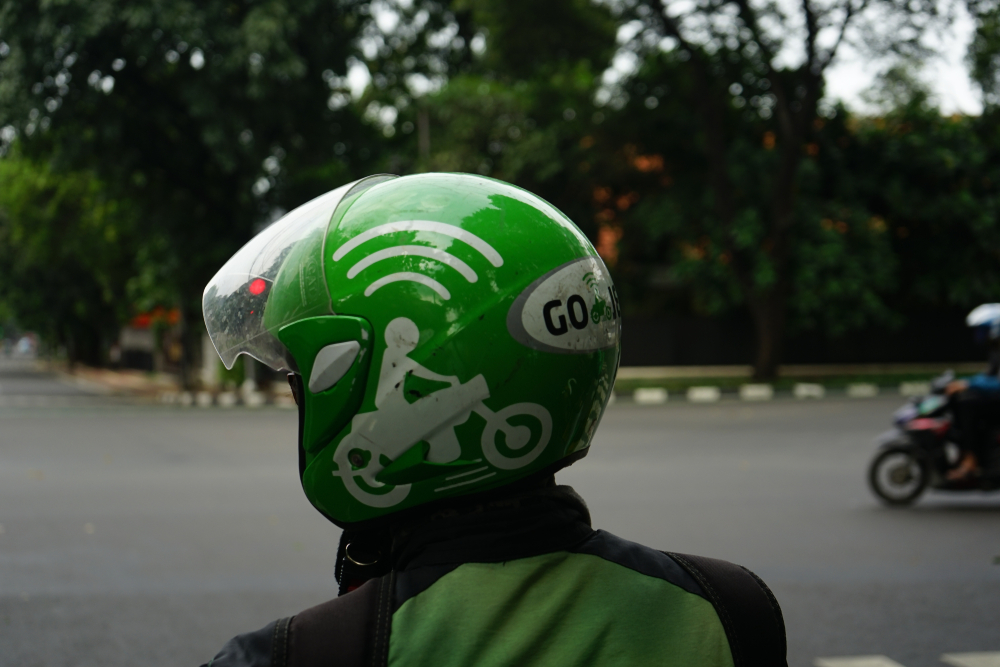With Go-Jek’s tremendous success in Indonesia and position as the country’s first unicorn, it is expecting to achieve profitability in the next few years. It has set its sights on challenging key markets in Southeast Asia to establish itself as the leading super-app.
Go-Jek currently offers close to 20 on-demand services in Indonesia, including transportation, digital payments, e-commerce logistics, food and grocery delivery, massages, and other beauty services.
Earlier this year, the Indonesian titan revealed plans to invest US$500 million to expand into Vietnam, Singapore, Thailand, and the Philippines. They expressed intentions to start with ride-hailing, before replicating its successful multi-service business in these neighbouring markets.
It is easy for Go-Jek to gain traction in Singapore due to its accustomization with digital payments and on-demand services. However, the industry is heavily saturated, with well-funded incumbents fighting for market domination in various verticals.
Should Go-Jek establish its super-app for the Singapore market, it will not be only fighting for market share with Grab, but various tech companies in the food and grocery delivery, transportation, logistics, and payments.
In this article, I will give a simple overview of the aforementioned verticals, the business model of the incumbents, and their respective market traction in Singapore.
Background information and summary: Go-Jek
Local traction:
- According to credible reports, 20,000 Singaporean drivers have already expressed interest and signed up with Go-Jek.
- Go-Jek had recently launched beta access. Exact app download figures are currently unknown.
- We also don’t know what other on-demand services will be launched in Singapore, as well as their launch dates.
- Go-Jek had set up the data science office in Singapore in January 2017. According to their careers page, they are actively looking to hire more software engineers.
Investment information:
- To date, Go-Jek has raised about US$3.3 billion from a list of reputable corporate investors and venture capitalists, including Google, Temasek Holdings, Tencent Holdings, and Meituan-Dianping.
- Go-Jek is investing US$500 million into their expansion plans in Southeast Asia.
Transportation in Singapore
The Go-Jek ecosystem could retain users better because of seamlessly integrated super-app
While Uber and Grab had a common investor in SoftBank, it appears that Go-Jek and Grab have no common investors. This could suggest a competition on price and promotions. However, Go-Jek did publicly reveal that a price war is not how they intend to differentiate themselves from their competition. Consumers can be price-sensitive for on-demand transportation, so only time will tell if a price war will ensue.
Grab has been publicly criticized by consumers for its excessive price surges since the departure of Uber earlier this year. Go-Jek seems to be capitalizing on the situation with its assurance to consumers that there will be no dynamic pricing in its marketing campaigns.
Instant food delivery in Singapore
Instant food delivery will likely be an extremely difficult market for Go-Jek to penetrate. Foodpanda, Deliveroo, GrabFood, and Honestbee are all well-funded and have engaged in aggressive marketing and advertising in the past year. However, it will be interesting to see if Go-Jek could pull a rabbit out of the hat with GO-FOOD.
Where Go-Jek can stand out:
- Strategic investment from Meituan-Dianping: the leading O2O platform in China
- Integrated GO-PAY digital wallet will create a seamless payment experience
- Know-how from acquiring more than 125,000 food merchants in 70 cities in Indonesia
Grocery shopping and delivery
Grocery shopping and delivery is not an easy market to break into as well. One can imagine the resources and expertise RedMart will be able to tap on now that it is owned by Lazada Group, which is in turn under Alibaba Group.
It is uncertain how the GO-MART feature will outshine its competitors in this category. Traditional supermarkets like NTUC FairPrice, Cold Storage, Sheng Siong, and Prime have all hopped on the online grocery shopping bandwagon, making it hard for Go-Jek to undercut them. To stand out with low prices, Go-Jek might hurt its profit margins.
Logistics/last-mile delivery
With more than US$756 million in collective funding across three leading logistics and last-mile delivery companies, Go-Jek will find themselves in a highly saturated space if they launch GO-BOX and GO-SEND in Singapore.
That being said, Go-Jek’s strength lies in the network effect of the super-app. If the transportation service GO-RIDE can attract more than 20,000 cars, the network of cars can also be used to deliver small packages in off-peak periods.
Payments
Digital wallet and payments services is an area that Go-Jek will potentially excel in. With the acquisition of four fintech companies: MVCommerce, Kartuku, Midtrans, and Mapan, GO-PAY grew to be one of Indonesia’s largest digital wallet services, responsible for 30% of all digital transactions in the country. It has since expanded to handle bill payments, micro-loans, and other financial services.
On the other hand, Grab has acquired Kudo to enhance GrabPay and other financial services capabilities.
While the market is large enough to accommodate multiple major players, Grab and Go-Jek will likely lead in a two-horse race due to the wide suite of services they can provide their users, adding value to their native digital wallets.
Conclusion
Since Uber’s departure from Southeast Asia in March 2018, Grab has taken over Uber’s assets and operations in eight countries in the region. Go-Jek’s president Andre Soelistyo has revealed that the group is looking to go public in three to five years’ time. That will likely boost Go-Jek with a bigger war chest to challenge the incumbents in various verticals.
With Go-Jek’s super-app business model and support and expertise from Google, Tencent Holdings (the company behind China’s super-app WeChat), and O2O giant Meituan-Dianping, Go-Jek has presented itself as a worthy opponent to challenge Grab for the lion’s share in Southeast Asia.
